Nanoscale optical pulse limiter facilitated by refractory metallic quantum wells
by Thamarasee Jeewandara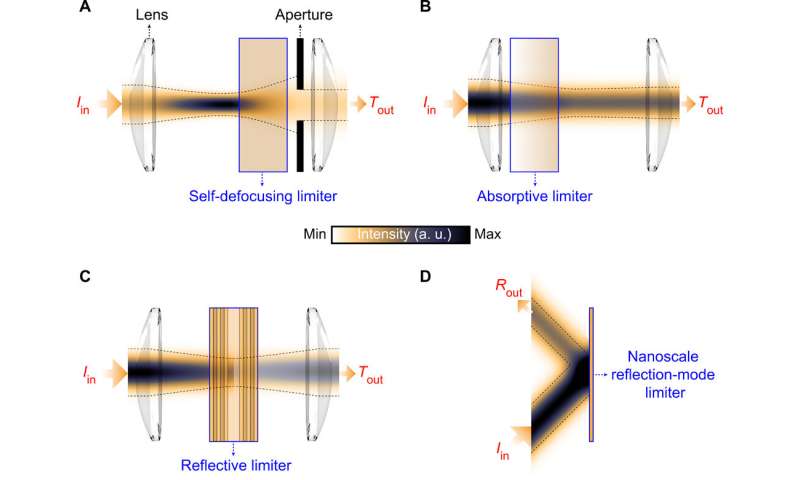
In the past several decades, physicists have conducted deep laboratory investigations into nonlinear optics, plasma physics and quantum science using advanced high-intensity, ultrashort-pulse lasers. Increased use of the technology naturally risked damaging the optical detection systems and therefore they proposed a variety of optical limiting mechanisms and devices. Device miniaturization of such designs while maintaining superior integrability and control can, however, become complex. In a new report, Haoliang Qian and a research team in electrical and computer engineering, materials science, chemistry and the Center for Memory and Recording Research at the University of California, San Diego, U.S., detailed a reflection-mode pulse limiter. They engineered the device using nanoscale refractory films made of aluminum oxide and sandwiched titanium nitride (Al2O3/TiN/Al2O3) to build the metallic quantum wells (MQWs). The quantum size effect of the MQW provided large and ultra-fast Kerr-type nonlinearities. Functional multilayers containing these MQWs will find new applications in meta-optics, nanophotonics and nonlinear optics, and the results are now published on Science Advances.
An optical limiter can facilitate linear transmission or reflection below a certain incident light intensity or power threshold, and above that threshold, the device can keep the reflected optical power at a tunable value. An appropriate limiter stationed in front of an optical sensor can protect the sensor and extend its working range to conditions more extreme than previously thought possible. Passive optical limiters have a fast response time and are in wide use to limit short optical pulses. The devices are made of materials with one of the following properties – nonlinear optical properties, including nonlinear refraction, nonlinear absorption or nonlinear scattering. Most nonlinear processes are based on the optical Kerr effect (electro-optical feature), giving rise to an ultrafast response time. Researchers therefore study extraordinary Kerr-type nonlinear materials as a critical element for new passive optical limiters to protect against ultrashort optical pulses. Kerr-type passive optical limiters are generally made of macroscale solid or liquid media. Scientists are yet to report on a material or system that provides a strong enough nonlinearity in the nanoscale in order to facilitate a reflection-mode pulse-limiting effect.
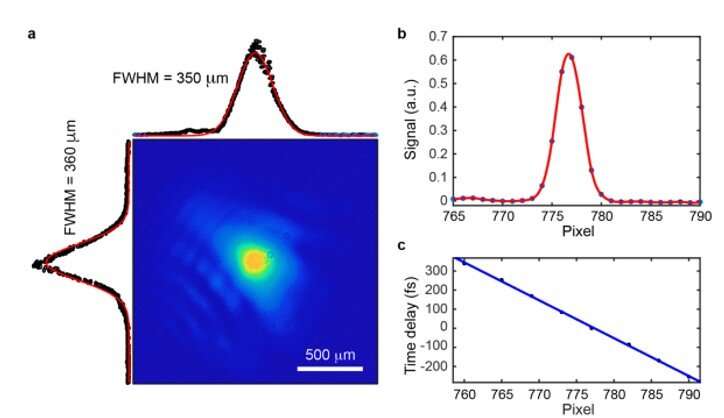
In this work, Qian et al. detailed a nanoscale Kerr-type optical limiter based on the durable MQW (metallic quantum wells) material system to generate femtosecond pulses. The device contained refractory materials such as titanium nitride (TiN) and aluminum oxide (Al2O3); ideal for high-intensity nonlinear optical applications developed on a sapphire substrate with atomic level accuracy. In the setup, they quantized the free electrons in the metallic well (TiN) sandwiched between the neighboring dielectric barrier (Al2O3). This experimental arrangement allowed the electronic conduction band of the confined TiN nanofilm to split into subbands. The team noted the first five subbands to be below the Fermi level, providing a wealth of electronic transitions. The transitions contributed to the pulse-limiting effect via the Kerr nonlinearity of the MQW setup and affected a variety of multiphoton absorption processes. The plentiful electronic subbands allowed unprecedented pulse-limiting behavior in the nanoscale refractory thin films.
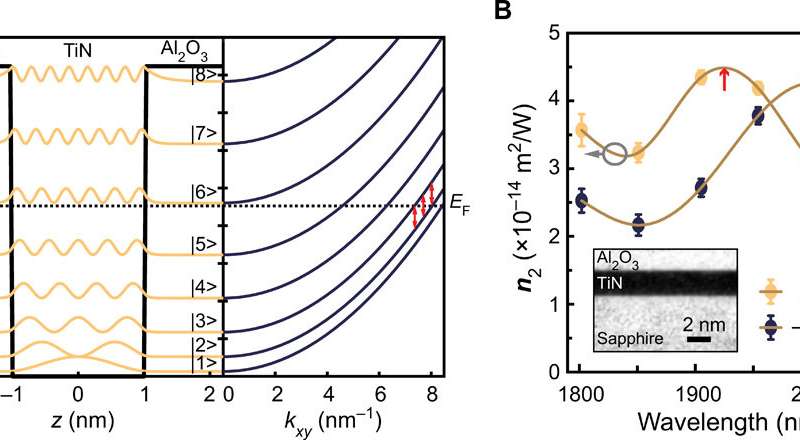
Due to the plasmonic effect of the constituent TiN, metallic quantum well samples exhibited a metal-like high reflection at low-intensity illumination. During z-scan measurements used to measure nonlinear optical properties of materials, the team observed a resolved resonant peak associated with the single-photon transition (Kerr nonlinearity) between subbands, which agreed with the calculated band structure. The proposed MQW functioned as a dielectric during high-intensity illumination to form a first-in-study reflection-mode optical limiter, providing a new degree of freedom to design an optimal optical limiting system. The nanoscale thin film MQW for a femtosecond pulse limiter worked in the reflection mode and Qian et al. integrated it on to the surface of an optical component to simplify the optical limiting configuration. They achieved unprecedented tunability for the devices by stacking MQWs as metamaterials and obtained a versatile nanoscale pulse limiter; a crucial element to design compact optical and photonic systems.
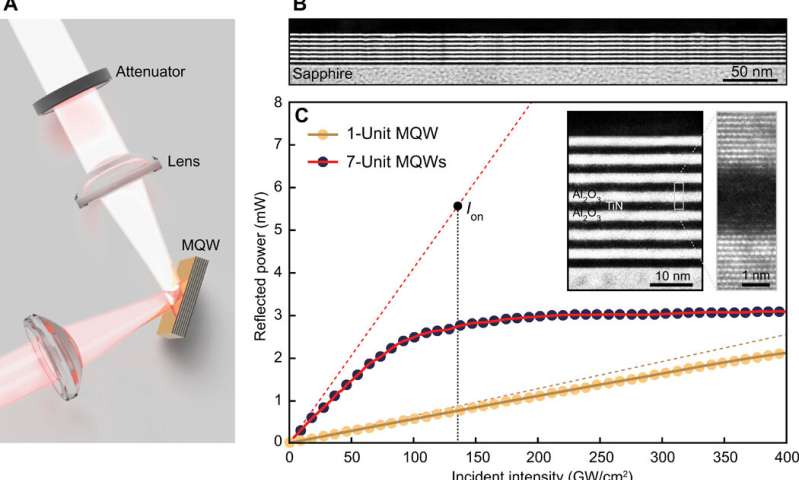
Due to metamaterial-enabled engineering the thickness of the nanoscale MQW films provided extraordinary tunability of pulse-limiting performance compared to conventional bulk optical limiters. Additional experiments revealed for the strong Kerr response of MQWs to originate from the single-photon transition between specific subbands. Due to single-photon absorption (1PA) and two-photon absorption (TPA) processes, free electrons above the Fermi sea could be continuously promoted in the setup. Based on the results, Qian et al. believe the observed multiple inter-subband transitions and their broadband Kerr effect in MQW systems to have similar pulse-limiting effects in the near-infrared (NIR) wavelengths.
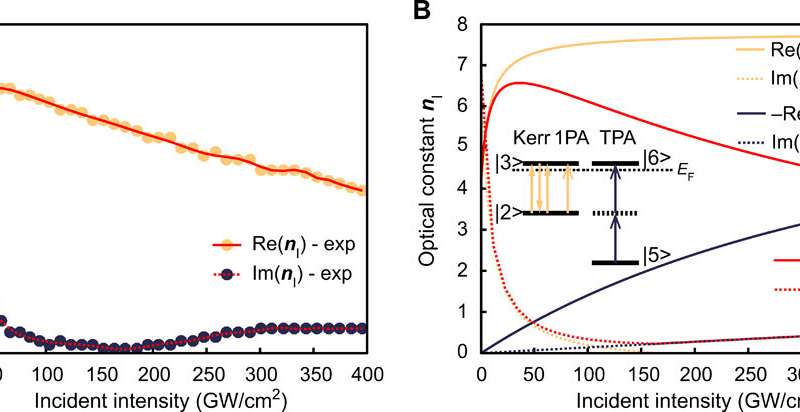
In this way, Haoliang Qian and colleagues demonstrated a nanoscale reflection-mode femtosecond pulse-limiting thin film made of refractory materials for the first time in this study. They facilitated the setup using large and ultrafast optical Kerr nonlinearities of the embedded MQWs. The team credited the unprecedented, intensity-dependent Kerr nonlinearities to the electron subbands in the MQW. The work provides a new mechanism to engineer extraordinary optical nonlinearities and novel applications with options for further tunability of nontrivial optical limiting and applications in nonlinear optics and integrated photonics.
More information: Haoliang Qian et al. Nanoscale optical pulse limiter enabled by refractory metallic quantum wells, Science Advances (2020). DOI: 10.1126/sciadv.aay3456
Geok-Kieng Lim et al. Giant broadband nonlinear optical absorption response in dispersed graphene single sheets, Nature Photonics (2011). DOI: 10.1038/nphoton.2011.177
U. Guler et al. Refractory Plasmonics, Science (2014). DOI: 10.1126/science.1252722
Journal information: Science Advances , Nature Photonics , Science
© 2020 Science X Network